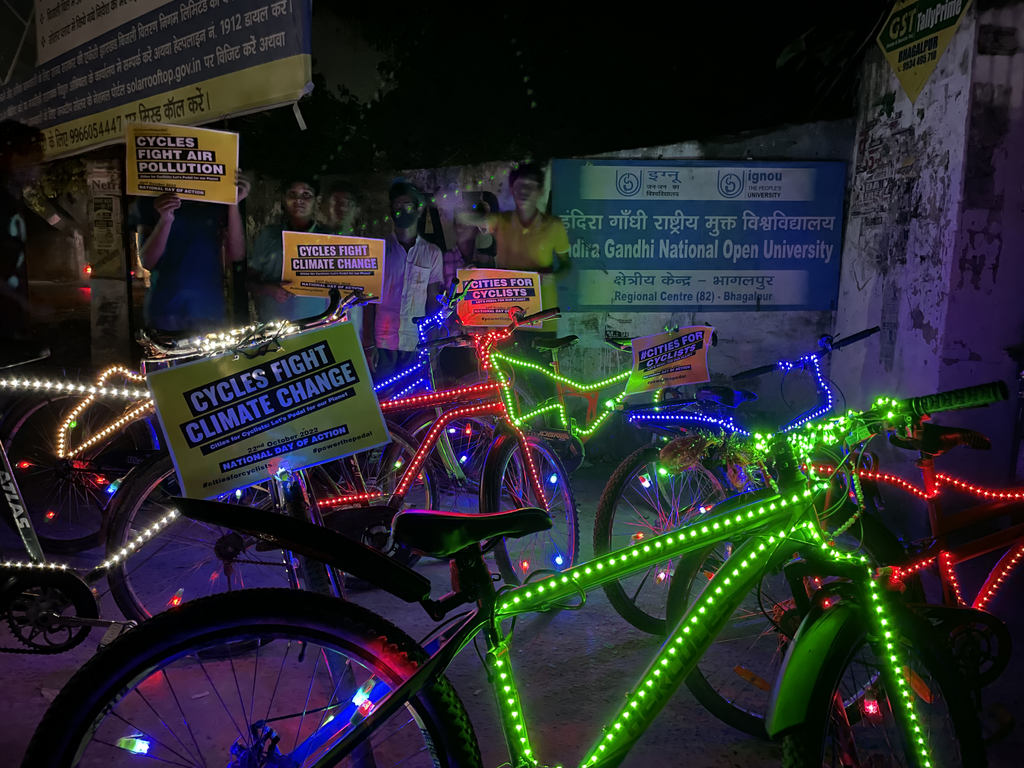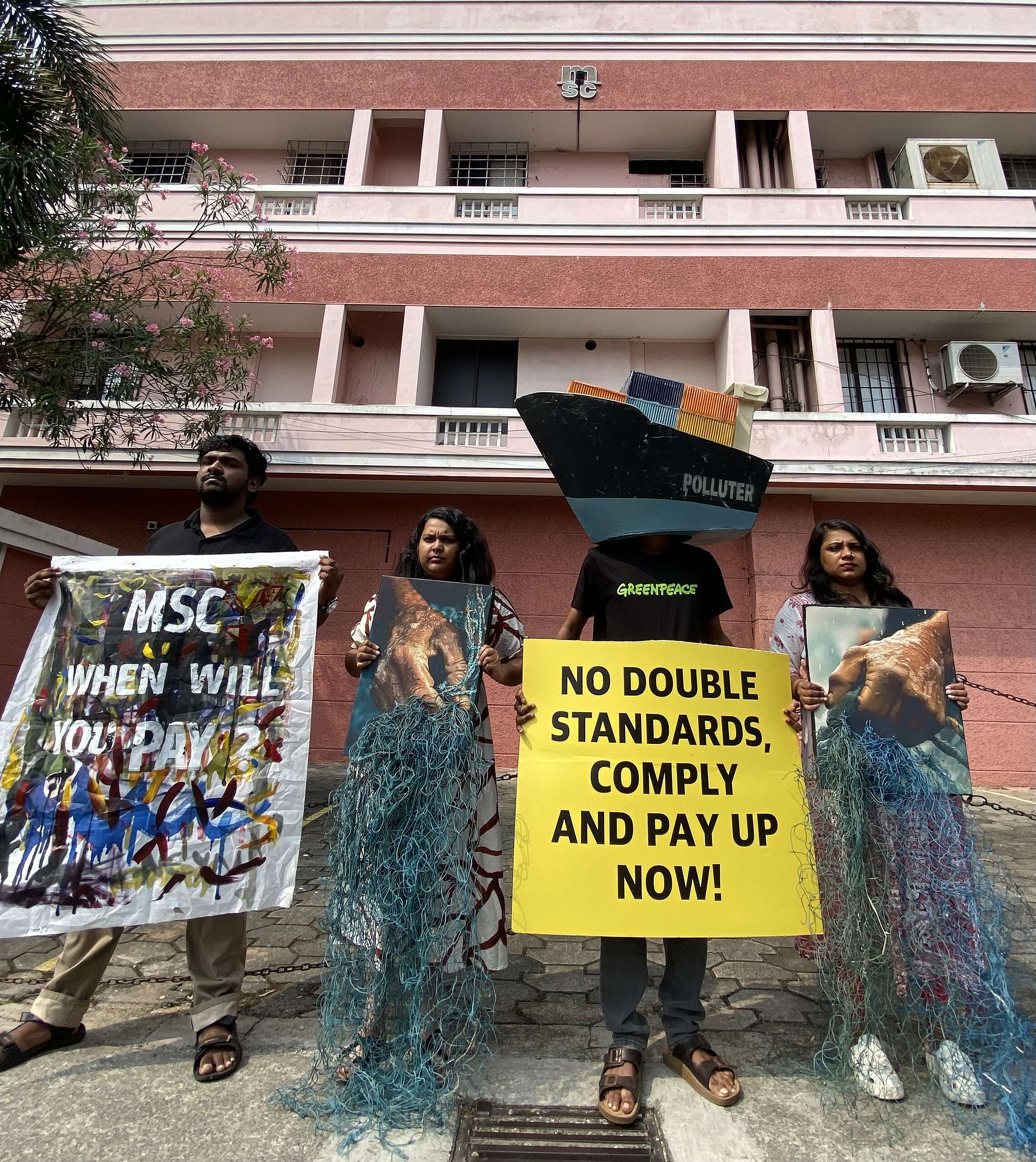
On the evening of October 22nd, 2022, citizens from over 60 cities across India lit up the streets with their cycles as they demanded safer, more accessible Cities For Cyclists. Community members and cycling groups gathered in each city, decorated their bicycles with diyas, lamps, flowers and lights, and carried placards to celebrate cyclists as champions of equitable and sustainable cities. The event was organised by Greenpeace India in close collaboration with a host of cycling groups and civil society organisations across multiple Indian states.
“Just as we decorate everything close to our heart and keep it clean and shiny, it is important for people to know that our cycles are just as important to us. Cycling enables my livelihood and my mobility, so why not celebrate the cycle! It gives me immense pleasure to see these cycles, with diyas and flowers, glowing ever so brightly”, said Kusum Lata from the Power The Pedal community, New Delhi.
Hundreds of cyclists and various organisations participated in the nation-wide activity that encouraged commuters to celebrate the spirit of the cyclists. Enthusiastic participants decorated their cycles with lights and flowers and held up placards demanding better policies that accommodate and prioritise non-motorised commuters on city streets. A city for cyclists is after all a city for everybody.
According to NFHS 2019-21, only 7.5 percent of Indian families own cars, whereas about 50.4 percent households own a bicycle. Bicycles help fight climate change, reduce air pollution and congestion, and provide a healthier mode of transport. Yet city mobility infrastructural plans continue to be largely car-centric.
“A critical rethink is required within city planning to prioritise people, instead of prioritising cars. Rather than designing our city-based infrastructure to serve the requirements of a narrow minority that uses private vehicles, our cities must be planned in ways that are people-centric and environmentally sound. We need a systemic reorganisation of infrastructure, financial support and a culture shift to redesign new mobility systems that encourage the use of green mobility over private cars”, says Avinash Chanchal, Campaign Manager, Greenpeace India.
There is enough evidence that links motorised vehicles with increasing emissions and pollution in our cities—60 percent of GHG emissions are produced by the transport sector. Citizens in most parts of India suffer from poor air quality—according to Greenpeace India’s Airpocalypse report (2020), more than 80 percent of cities/towns exceed the National Ambient Air Quality Standards (NAAQS). The air pollution from burning fossil fuels causes one million premature deaths and costs more than 10 Lakh Crores to the Indian economy.
There is a growing cycling movement in India and in many cities across the world citizens are taking steps towards a carbon-free future. Despite being climate-friendly, healthy, and an important mode of transport especially for the larger, low-income communities, cyclists continue to face numerous obstacles while operating on the streets. These can include a culture of bullying cyclists off-the-road perpetuated by four-wheelers and other heavy-motorised vehicles, a severe lack of infrastructure, policy oversight, as well as bans placed on cyclists by governments. Hence, not only do we need more space for cyclists, governments also need to actively incentivise people to shift to cycling, walking and public transport in order to achieve multiple Sustainable Development Goals.
Contact Details
Avinash Chanchal, +91 8882153664, [email protected]
Nischita Verrendra, +91 9845828096, [email protected]



